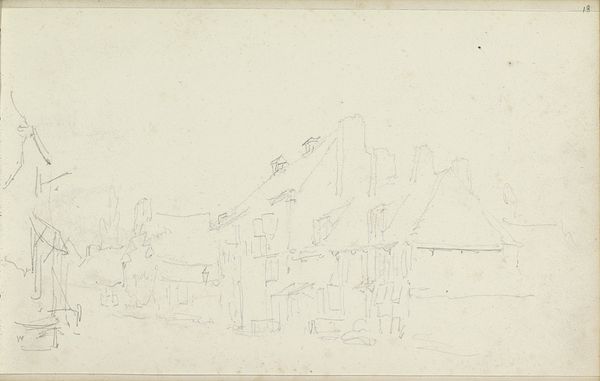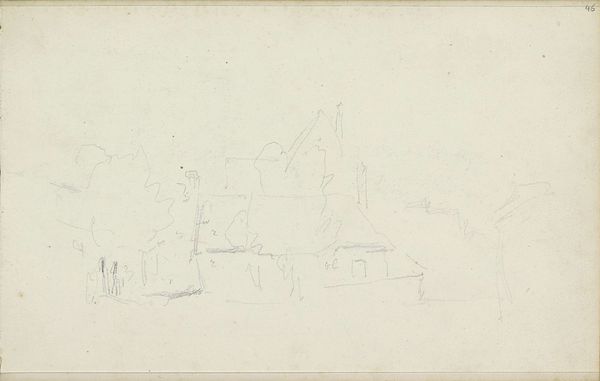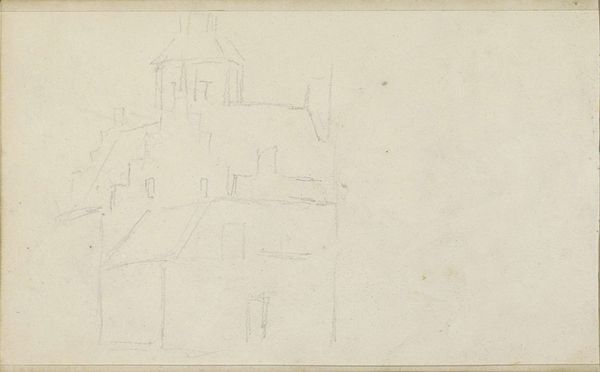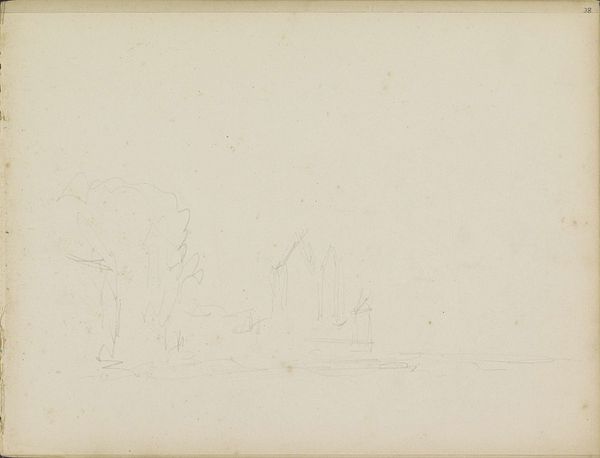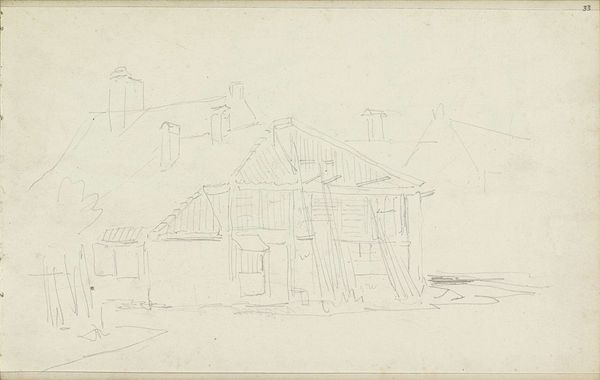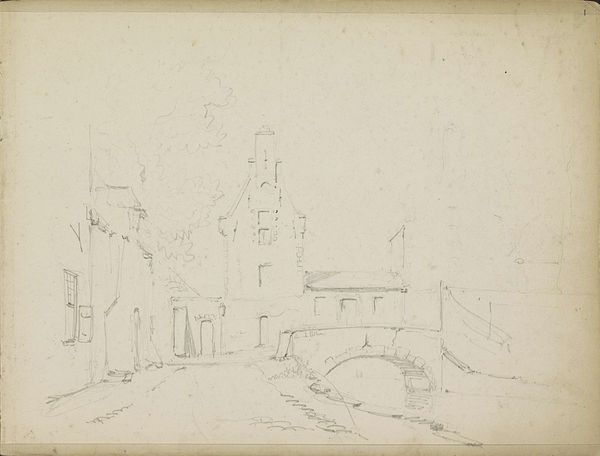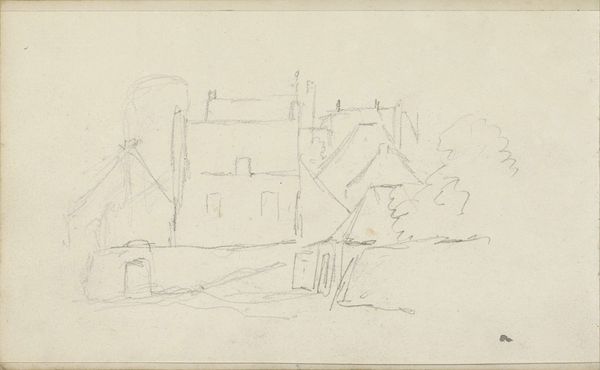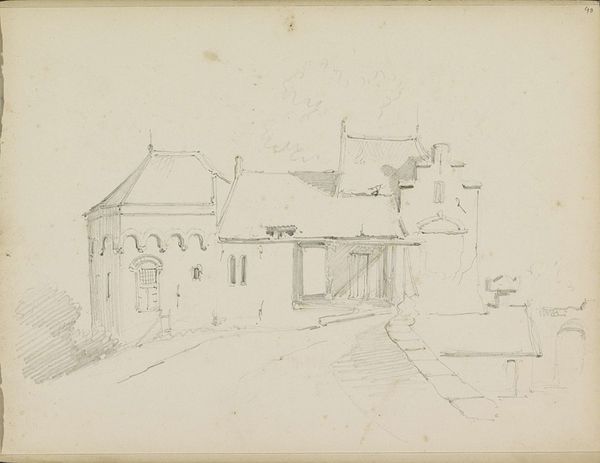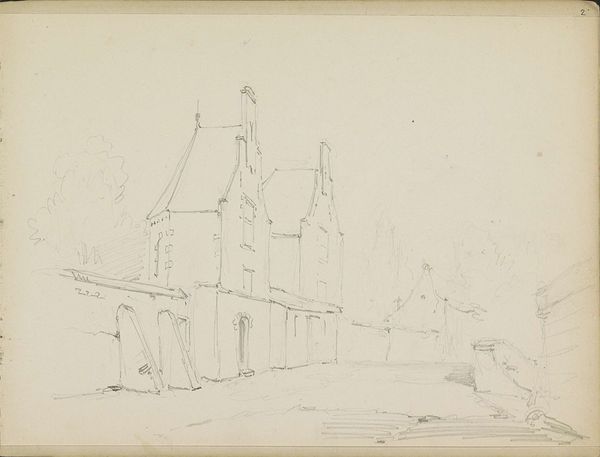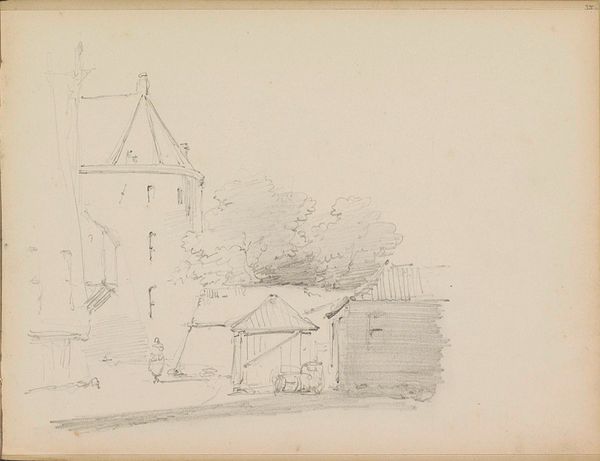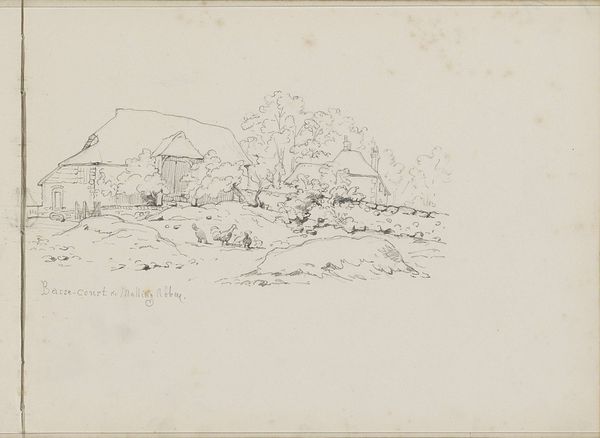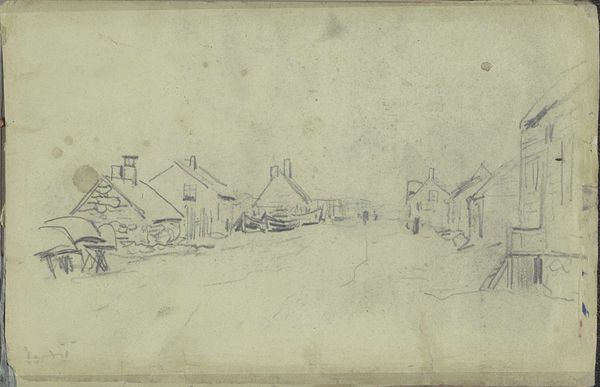
drawing, pencil
#
drawing
#
amateur sketch
#
toned paper
#
light pencil work
#
pencil sketch
#
incomplete sketchy
#
personal sketchbook
#
ink drawing experimentation
#
pen-ink sketch
#
pencil
#
sketchbook drawing
#
cityscape
#
sketchbook art
#
realism
Copyright: Rijks Museum: Open Domain
Curator: Before us we have "Gezicht op gebouwen," which translates to "View of Buildings," a pencil drawing made on toned paper between approximately 1828 and 1897, and is attributed to Adrianus Eversen. Editor: It looks like a ghost city! Or maybe the memory of one. Faint lines suggest buildings emerging and disappearing into the fog—there’s something deeply unsettling about the work's incompleteness. Curator: The sketch-like quality points to a specific artistic practice, something likely produced in the artist's personal sketchbook. Such drawings were often about experimentation, about capturing the fleeting essence of a scene rather than aiming for perfect representation. Consider what that might say about whose perspectives get validated, and whose do not. Editor: Absolutely. Eversen positions himself in relation to a particular urban context. The absence of people raises fascinating questions about visibility and agency. Who gets included and excluded? What sociopolitical narratives emerge in their absence? The lines also lack the definitiveness one would expect of a polished realist work. Curator: These rapid sketches are very evocative in their open interpretation. Do you think the fact that the sketch is seemingly unfinished plays a role in its contemporary relevance, beyond that of historical document? Does that incompleteness itself serve as a statement? Editor: Without a doubt. Today, in our accelerated, digital age, such immediacy connects powerfully. It bypasses the polished image in favor of showing the messy and subjective work behind representation. And perhaps its 'unfinished' aesthetic is, in itself, a conscious decision related to issues of race and social inequalities by making a more active invitation for broader interpretation. Curator: It feels radical somehow, this vulnerability. Eversen, even unconsciously, disrupts the expected conventions by revealing the creative process instead of the finalized outcome. It seems very telling of his stance toward issues around politics and imagery within artistic creation itself. Editor: Agreed. Ultimately, a look into such works forces one to ponder, Whose narratives are valued enough to complete? To archive? To remember? Curator: Such profound points of reflection, truly. I feel like this gives new value to these fleeting artistic creations.
Comments
No comments
Be the first to comment and join the conversation on the ultimate creative platform.
